-
 Bitcoin
Bitcoin $117900
-0.22% -
 Ethereum
Ethereum $3620
1.45% -
 XRP
XRP $3.392
-1.67% -
 Tether USDt
Tether USDt $1.001
-0.01% -
 BNB
BNB $741.5
1.66% -
 Solana
Solana $177.7
0.35% -
 USDC
USDC $0.9999
0.00% -
 Dogecoin
Dogecoin $0.2524
4.26% -
 TRON
TRON $0.3190
-1.74% -
 Cardano
Cardano $0.8331
1.49% -
 Hyperliquid
Hyperliquid $44.73
-0.94% -
 Stellar
Stellar $0.4609
-0.52% -
 Sui
Sui $3.844
2.54% -
 Chainlink
Chainlink $18.54
2.73% -
 Hedera
Hedera $0.2685
2.60% -
 Bitcoin Cash
Bitcoin Cash $522.6
1.91% -
 Avalanche
Avalanche $24.57
4.49% -
 Shiba Inu
Shiba Inu $0.00001508
2.57% -
 Litecoin
Litecoin $111.2
9.56% -
 UNUS SED LEO
UNUS SED LEO $8.989
0.15% -
 Toncoin
Toncoin $3.185
-0.08% -
 Polkadot
Polkadot $4.391
3.82% -
 Uniswap
Uniswap $10.34
3.56% -
 Monero
Monero $327.3
1.09% -
 Ethena USDe
Ethena USDe $1.001
-0.02% -
 Bitget Token
Bitget Token $4.953
1.19% -
 Pepe
Pepe $0.00001351
2.67% -
 Dai
Dai $1.000
0.01% -
 Aave
Aave $320.9
0.41% -
 Bittensor
Bittensor $415.9
1.00%
What are the common situations in which DMI fails? What signal will DMI give when there is a false breakthrough?
The DMI can fail in sideways markets, whipsaws, false breakouts, and overbought/oversold conditions, leading to potential trading losses.
May 22, 2025 at 11:49 pm
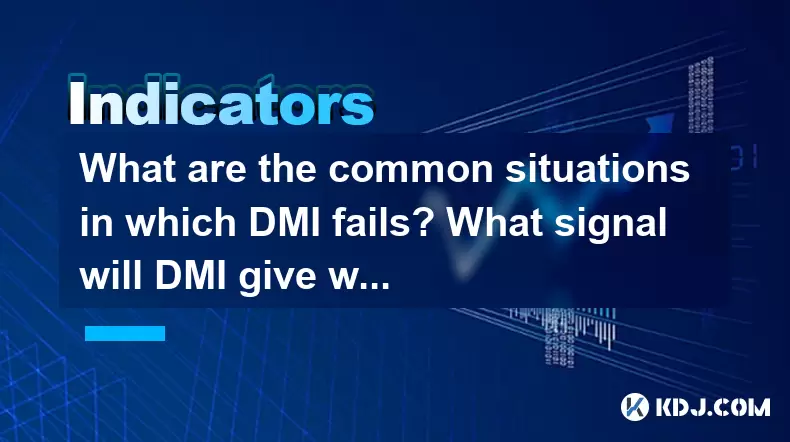
The Directional Movement Index (DMI) is a popular technical analysis indicator used by traders in the cryptocurrency market to determine the strength of a trend and potential trading opportunities. However, like all technical indicators, the DMI is not infallible and can sometimes fail to provide accurate signals. This article will explore common situations where the DMI fails and what signals it may give during false breakthroughs.
Understanding DMI and Its Components
The DMI consists of three main components: the Positive Directional Indicator (+DI), the Negative Directional Indicator (-DI), and the Average Directional Index (ADX). The +DI measures the upward movement in price, while the -DI measures the downward movement. The ADX, on the other hand, quantifies the strength of the trend, regardless of its direction.
When the +DI is above the -DI, it suggests a bullish trend, and when the -DI is above the +DI, it indicates a bearish trend. The ADX, typically plotted on a separate chart, helps traders determine whether the market is trending or ranging. An ADX value above 25 typically indicates a strong trend, while a value below 20 suggests a weak or non-trending market.
Common Situations Where DMI Fails
1. Sideways Markets
One of the most common situations where the DMI fails is in a sideways or range-bound market. In such markets, the price moves within a relatively narrow range without establishing a clear trend. In these conditions, the +DI and -DI lines may cross frequently, generating false signals. The ADX, which measures trend strength, will often remain below 20, indicating a lack of a strong trend. Traders relying solely on the DMI may find themselves entering and exiting trades based on these false signals, resulting in potential losses.
2. Whipsaws and Choppy Markets
Whipsaws occur when the market experiences rapid and frequent changes in direction, causing the +DI and -DI lines to cross back and forth repeatedly. This choppiness can lead to numerous false signals, as the DMI struggles to differentiate between genuine trend changes and short-term fluctuations. Traders may enter trades based on a perceived trend only to find the market quickly reversing, leading to stop-loss triggers and potential losses.
3. False Breakouts
False breakouts are another situation where the DMI can fail. A false breakout occurs when the price temporarily moves beyond a key support or resistance level but fails to sustain the move and reverts back within the range. During a false breakout, the DMI might initially signal a strong trend as the +DI or -DI crosses over, accompanied by a rising ADX. However, as the price reverses, the DMI signals may quickly change, leading to confusion and potential losses for traders who entered trades based on the initial breakout.
4. Overbought and Oversold Conditions
In overbought or oversold markets, the DMI can also fail to provide reliable signals. When the market is overbought, the +DI may remain high, suggesting a continuing bullish trend, even as the price starts to decline. Conversely, in an oversold market, the -DI may stay elevated, indicating a bearish trend, despite the price beginning to rise. These conditions can lead to false signals, as the DMI may not quickly adjust to the changing market dynamics.
DMI Signals During False Breakthroughs
Understanding the signals the DMI gives during false breakthroughs can help traders better navigate these challenging market conditions. A false breakthrough typically involves a temporary price movement beyond a significant level, followed by a quick reversal back within the original range.
1. Initial Signal of a Breakthrough
During a false breakthrough, the DMI will initially signal a strong trend. If the price breaks above resistance, the +DI will rise above the -DI, and the ADX will start to increase, indicating a strengthening bullish trend. Similarly, if the price breaks below support, the -DI will rise above the +DI, and the ADX will increase, suggesting a strengthening bearish trend.
2. Quick Reversal and Conflicting Signals
As the price quickly reverses following the false breakthrough, the DMI signals will change. The +DI and -DI lines may cross again, indicating a potential trend reversal. The ADX, which had initially risen, may start to decline, signaling a weakening trend. These conflicting signals can confuse traders, leading to uncertainty about whether to stay in the trade or exit.
3. ADX Fluctuations
The ADX plays a crucial role in identifying false breakthroughs. During a false breakthrough, the ADX may initially rise above 25, suggesting a strong trend. However, as the price reverses, the ADX will likely fall back below 25, indicating that the trend is not as strong as initially thought. Traders should pay close attention to the ADX to help differentiate between genuine and false breakthroughs.
4. Volume and Other Indicators
To better assess the validity of a breakthrough, traders should consider other indicators and market factors. Volume is particularly important; a false breakthrough often occurs with low trading volume, while a genuine breakthrough is typically accompanied by high volume. Combining the DMI with other technical indicators, such as the Relative Strength Index (RSI) or Moving Average Convergence Divergence (MACD), can provide additional confirmation or contradiction of the DMI signals.
Enhancing DMI Effectiveness
While the DMI can fail in certain market conditions, traders can enhance its effectiveness by using it in conjunction with other tools and strategies. Here are some tips to improve the reliability of DMI signals:
- Use Multiple Timeframes: Analyzing the DMI across different timeframes can provide a more comprehensive view of the market trend. A strong trend on a longer timeframe may confirm a shorter-term signal, while conflicting signals across timeframes may indicate a false breakthrough.
- Combine with Other Indicators: Using the DMI alongside other technical indicators, such as the RSI or MACD, can help confirm or refute DMI signals. For instance, if the DMI signals a bullish trend but the RSI indicates overbought conditions, it may suggest a false breakthrough.
- Monitor Volume: Volume is a critical factor in validating breakouts. A genuine breakthrough is often accompanied by a significant increase in trading volume, while a false breakthrough may occur with low volume.
- Set Realistic Expectations: Understanding that no indicator is perfect can help traders set realistic expectations. Using the DMI as part of a broader trading strategy, rather than relying on it exclusively, can improve overall trading performance.
FAQs
Q1: Can the DMI be used effectively in all market conditions?
While the DMI is a powerful tool for identifying trends, it is less effective in sideways or choppy markets. In these conditions, the DMI may generate numerous false signals, leading to potential losses. Traders should be cautious when using the DMI in non-trending markets and consider combining it with other indicators to improve its reliability.
Q2: How can traders differentiate between a genuine and a false breakthrough using the DMI?
To differentiate between genuine and false breakthroughs, traders should pay close attention to the ADX and volume. A genuine breakthrough is often accompanied by a sustained rise in the ADX above 25 and high trading volume. In contrast, a false breakthrough may see the ADX quickly fall back below 25 and occur with low volume. Combining the DMI with other technical indicators can also provide additional confirmation.
Q3: Are there any specific settings for the DMI that can help reduce false signals?
While the standard settings for the DMI (typically a 14-period setting) are widely used, traders can experiment with different settings to suit their trading style and market conditions. Some traders may find that using a shorter period, such as 10, can help reduce false signals in faster-moving markets, while a longer period, such as 20, may be more suitable for slower-moving markets. However, changing the settings may also affect the timeliness of the signals.
Q4: Can the DMI be used effectively in conjunction with other trend-following strategies?
Yes, the DMI can be effectively used in conjunction with other trend-following strategies. For instance, combining the DMI with moving averages or trendlines can provide additional confirmation of the trend direction. Traders can use the DMI to identify the strength of the trend and then use other trend-following tools to enter and exit trades, potentially improving the overall effectiveness of their trading strategy.
Disclaimer:info@kdj.com
The information provided is not trading advice. kdj.com does not assume any responsibility for any investments made based on the information provided in this article. Cryptocurrencies are highly volatile and it is highly recommended that you invest with caution after thorough research!
If you believe that the content used on this website infringes your copyright, please contact us immediately (info@kdj.com) and we will delete it promptly.
- WLFI Token Trading Approved: From Trump Ties to Community Votes
- 2025-07-20 09:10:12
- CoinDCX's $44.2 Million Security Breach: A Wake-Up Call for Crypto Exchanges
- 2025-07-20 08:30:13
- Trump, WLFI, and Token Release: A New York Minute on Crypto
- 2025-07-20 08:30:13
- Ripple's RLUSD: The Bluechip Stablecoin Set to Disrupt the Market?
- 2025-07-20 08:50:11
- Bitcoin Price Action: Is Weakening Demand on the Horizon?
- 2025-07-20 08:50:11
- Ripple's RLUSD: Top-Ranked Stablecoin Shaking Up the Market
- 2025-07-20 08:55:12
Related knowledge

Advanced RSI strategies for crypto
Jul 13,2025 at 11:01am
Understanding the Basics of RSI in Cryptocurrency TradingThe Relative Strength Index (RSI) is a momentum oscillator used to measure the speed and chan...
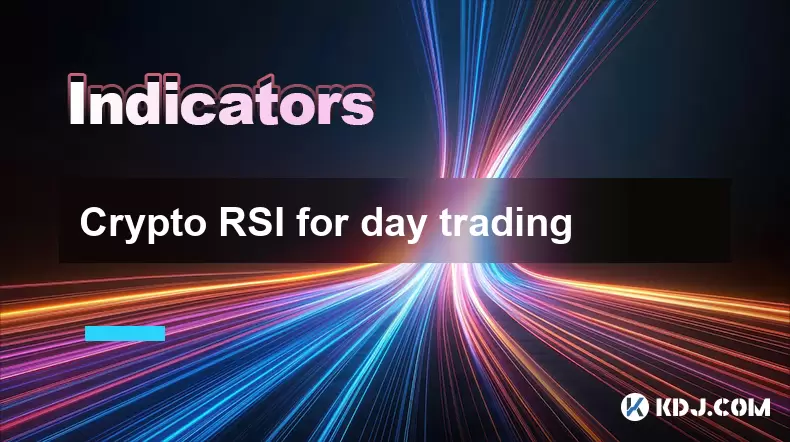
Crypto RSI for day trading
Jul 12,2025 at 11:14am
Understanding RSI in the Context of Cryptocurrency TradingThe Relative Strength Index (RSI) is a momentum oscillator used to measure the speed and cha...
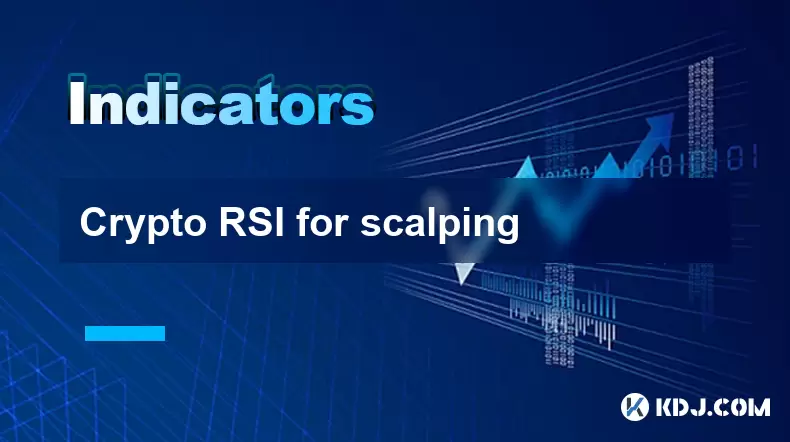
Crypto RSI for scalping
Jul 12,2025 at 11:00pm
Understanding RSI in the Context of Crypto TradingThe Relative Strength Index (RSI) is a momentum oscillator widely used by traders to measure the spe...
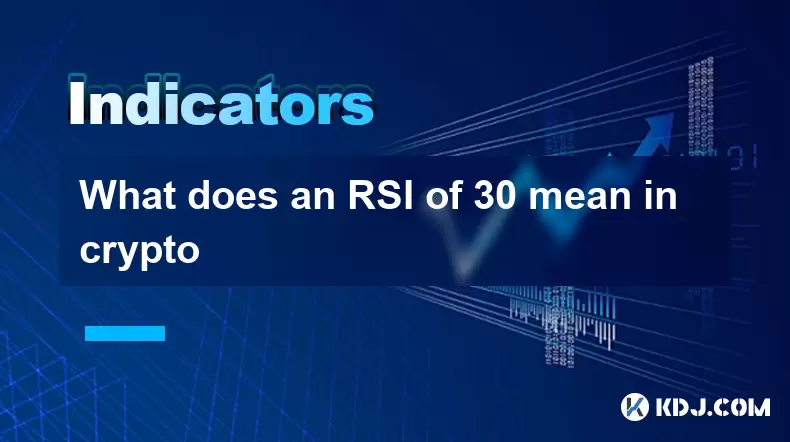
What does an RSI of 30 mean in crypto
Jul 15,2025 at 07:07pm
Understanding RSI in Cryptocurrency TradingRelative Strength Index (RSI) is a momentum oscillator widely used in cryptocurrency trading to measure the...
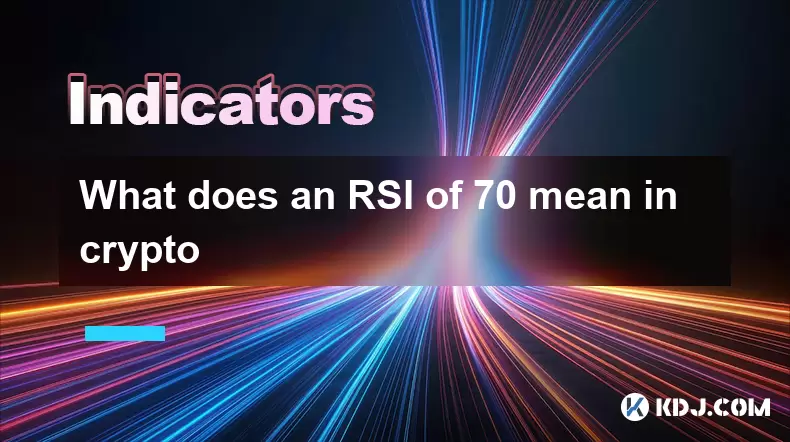
What does an RSI of 70 mean in crypto
Jul 13,2025 at 06:07pm
Understanding the RSI Indicator in Cryptocurrency TradingThe Relative Strength Index (RSI) is a widely used technical analysis tool that helps traders...
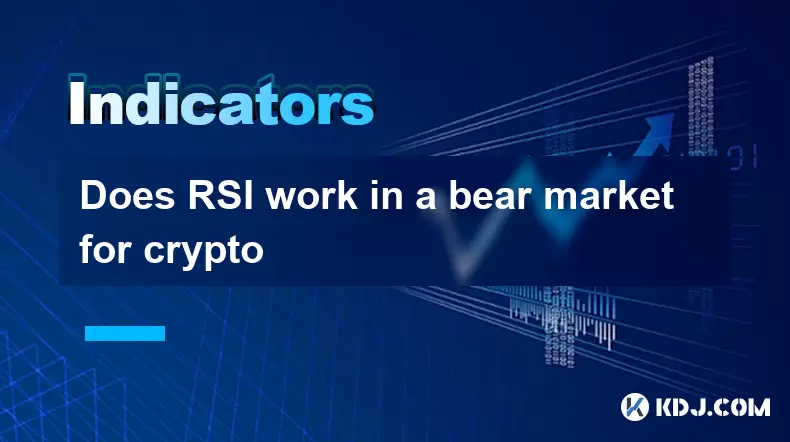
Does RSI work in a bear market for crypto
Jul 16,2025 at 01:36pm
Understanding RSI in Cryptocurrency TradingThe Relative Strength Index (RSI) is a momentum oscillator used by traders to measure the speed and change ...

Advanced RSI strategies for crypto
Jul 13,2025 at 11:01am
Understanding the Basics of RSI in Cryptocurrency TradingThe Relative Strength Index (RSI) is a momentum oscillator used to measure the speed and chan...

Crypto RSI for day trading
Jul 12,2025 at 11:14am
Understanding RSI in the Context of Cryptocurrency TradingThe Relative Strength Index (RSI) is a momentum oscillator used to measure the speed and cha...

Crypto RSI for scalping
Jul 12,2025 at 11:00pm
Understanding RSI in the Context of Crypto TradingThe Relative Strength Index (RSI) is a momentum oscillator widely used by traders to measure the spe...

What does an RSI of 30 mean in crypto
Jul 15,2025 at 07:07pm
Understanding RSI in Cryptocurrency TradingRelative Strength Index (RSI) is a momentum oscillator widely used in cryptocurrency trading to measure the...

What does an RSI of 70 mean in crypto
Jul 13,2025 at 06:07pm
Understanding the RSI Indicator in Cryptocurrency TradingThe Relative Strength Index (RSI) is a widely used technical analysis tool that helps traders...

Does RSI work in a bear market for crypto
Jul 16,2025 at 01:36pm
Understanding RSI in Cryptocurrency TradingThe Relative Strength Index (RSI) is a momentum oscillator used by traders to measure the speed and change ...
See all articles

























































































